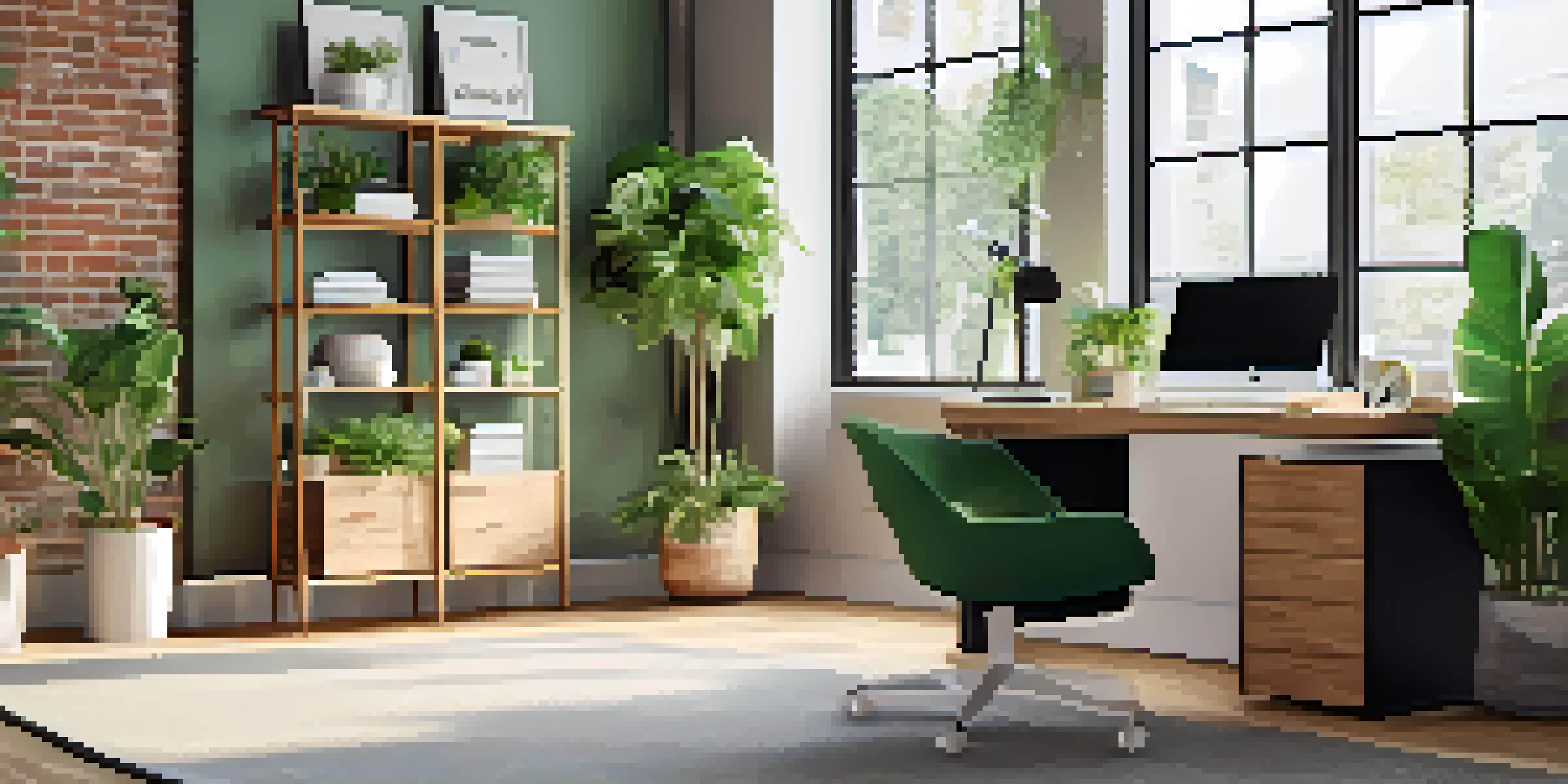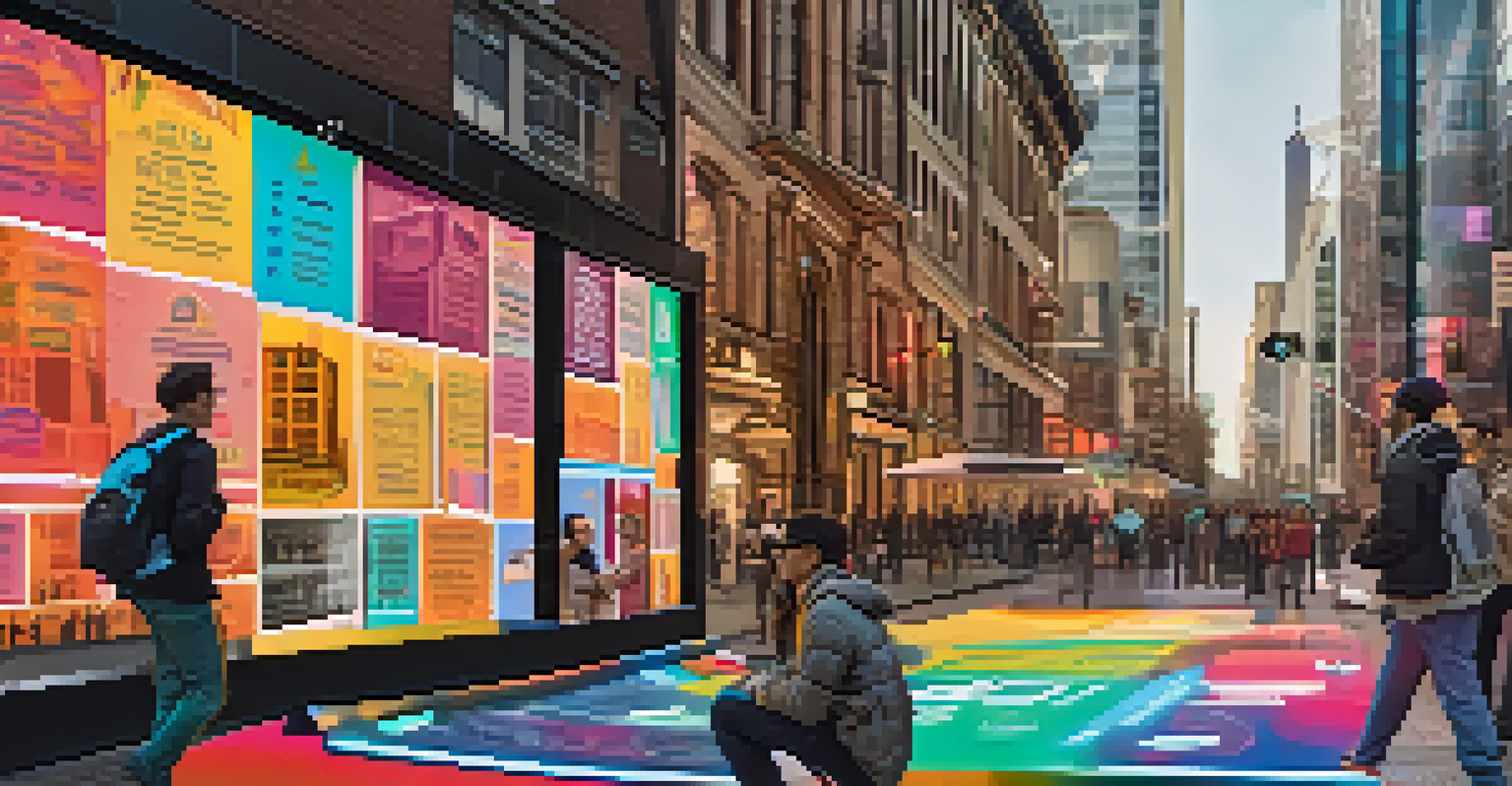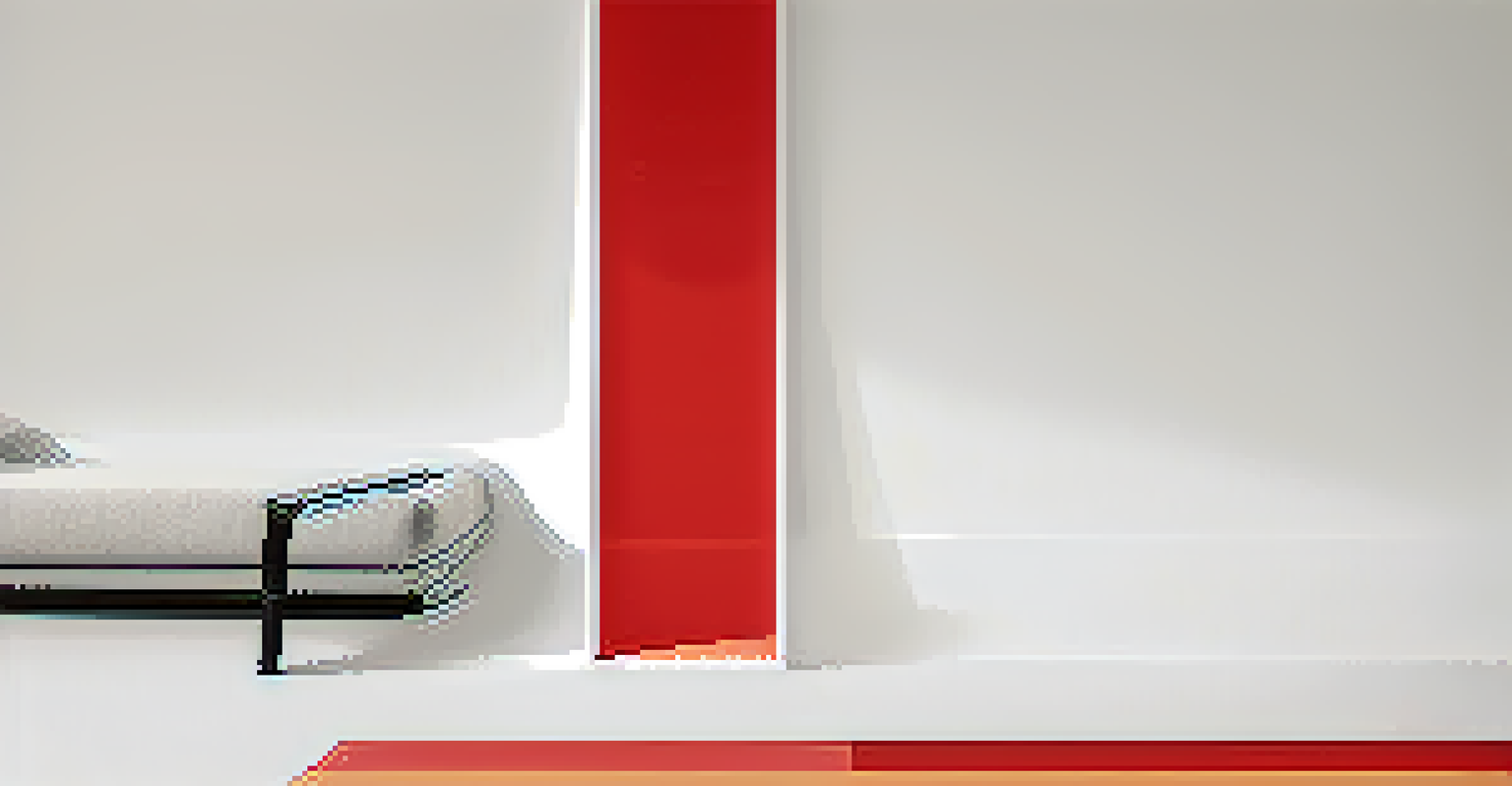The Future of Digital Typography: Trends and Innovations Ahead

The Rise of Variable Fonts: Flexibility in Design
Variable fonts are changing the digital typography landscape by allowing multiple styles within a single font file. This innovation means designers can create more dynamic and adaptable designs without overwhelming users with countless font files. Imagine being able to seamlessly adjust weight, width, and slant of a typeface, all while keeping it cohesive—this flexibility is a game changer for web design.
Design is not just what it looks like and feels like. Design is how it works.
With variable fonts, websites can load faster since fewer files are needed, enhancing user experience. As designers embrace this technology, they can bring more creativity into their projects, tailoring typography to match the tone and feel of their content. It’s like having a Swiss Army knife for fonts, providing endless possibilities for customization.
As we look ahead, expect variable fonts to become a standard in digital typography, offering both aesthetic appeal and practical benefits. This trend not only simplifies the design process but also encourages more thoughtful typography choices that resonate with audiences.
AI and Typography: Enhancing Creativity with Technology
Artificial intelligence (AI) is revolutionizing how we approach typography by automating design processes and suggesting font pairings that complement each other. Imagine having an assistant that not only understands your design preferences but also predicts what fonts will resonate best with your audience. This technology can streamline workflows and inspire new creative directions.

AI tools can analyze vast amounts of data to identify emerging trends and styles, helping designers stay ahead of the curve. By automating tedious tasks, designers can focus more on the creative aspects of their work, leading to more innovative and engaging typography solutions. It’s like having a brainstorming partner that never runs out of ideas.
Variable Fonts Enhance Design Flexibility
Variable fonts allow designers to create dynamic typography with multiple styles in a single file, improving both aesthetics and performance.
Looking ahead, AI will likely play an even more significant role in typography, possibly even generating custom typefaces based on specific project needs. As this technology continues to evolve, it will enhance creativity, making it easier for designers to push the boundaries of traditional typography.
Responsive Typography: Adapting to Different Screens
Responsive typography is essential in today’s multi-device world, ensuring that text looks great on everything from smartphones to large monitors. This approach emphasizes fluid font sizes and styles that adapt based on screen size and resolution. Imagine reading an article online where the text changes size to ensure readability without zooming in—this is the promise of responsive typography.
Good design is as little design as possible.
Designers are increasingly using CSS techniques to create typography that responds to the user’s device, enhancing accessibility and user experience. By prioritizing readability across various platforms, brands can better engage their audiences and keep them coming back for more. It’s all about meeting users where they are, quite literally.
As we move forward, expect responsive typography to become a standard practice in web design, shaping how content is consumed in our digital age. By focusing on adaptability, designers can create visually appealing experiences that are also functional and user-friendly.
Sustainable Typography: Eco-Friendly Design Choices
Sustainability is becoming an essential consideration in all aspects of design, including typography. Designers are increasingly looking for eco-friendly fonts and practices that reduce digital waste. This trend reflects a broader movement toward environmentally responsible design, where every choice counts—from the materials used to the fonts selected.
Using web-safe fonts and minimizing the number of font files can contribute to reduced energy consumption and faster load times. Designers are also exploring ways to create typefaces that require fewer resources while maintaining quality and aesthetics. Think of it as a way to give back to the planet while still delivering compelling design.
AI Transforms Typography Creation
Artificial intelligence is revolutionizing typography by automating design processes and suggesting complementary font pairings.
As awareness grows around the environmental impact of digital design, expect sustainable typography to gain momentum. It's not just a trend; it's a commitment to making thoughtful choices that benefit both the design community and the planet.
Augmented Reality and Typography: A New Dimension
Augmented reality (AR) is opening up exciting possibilities for typography, allowing designers to integrate text into immersive environments. Imagine navigating a city with AR glasses that overlay information right onto the streets, with typography that adapts to the context around you. This blend of technology and design offers a fresh way to engage audiences.
As AR technology becomes more accessible, typography will play a crucial role in how information is presented in these new spaces. Designers will need to consider how text interacts with physical environments, ensuring readability and aesthetics while maintaining functionality. It's a blend of creativity and practicality that challenges traditional design norms.
Looking forward, the integration of typography in AR will likely redefine how we communicate information in various contexts, from advertising to education. This trend encourages designers to think outside the box and explore new ways to connect with audiences through innovative typography.
Minimalism in Typography: Less is More
Minimalism continues to be a powerful trend in typography, emphasizing simplicity and clarity. This approach strips away the unnecessary, focusing on the message and the essence of the design. Think of it as giving your audience a breath of fresh air—clear, concise, and easy to digest.
In a world inundated with information, minimalistic typography helps brands stand out by prioritizing readability and style. By using fewer elements, designers can create impactful messages that resonate with audiences, allowing them to focus on what truly matters. It's like cleaning out a cluttered room, leaving only the essentials that spark joy.
Sustainability Drives Typography Choices
Designers are increasingly prioritizing eco-friendly fonts and practices to reduce digital waste and minimize their environmental impact.
As we look to the future, expect minimalism to remain influential in digital typography, pushing designers to create thoughtful, user-friendly experiences. This trend encourages a deeper connection between the brand and the audience through the power of simplicity.
Cultural Influences on Typography: Global Perspectives
As the digital world becomes more interconnected, cultural influences are playing a significant role in shaping typography trends. Designers are increasingly drawing inspiration from diverse cultures, integrating unique styles and elements into their work. This cross-cultural exchange enriches the design landscape, offering fresh perspectives and ideas.
Typography can be a powerful way to express identity and communicate messages that resonate with specific audiences. By embracing cultural influences, designers can create more relatable and meaningful connections with users. It’s like a cultural potluck, where everyone brings something different to the table, enhancing the overall experience.

Looking ahead, expect cultural influences to continue shaping the future of typography. As designers explore and celebrate diversity, they will create more inclusive and engaging designs that reflect the richness of global perspectives.